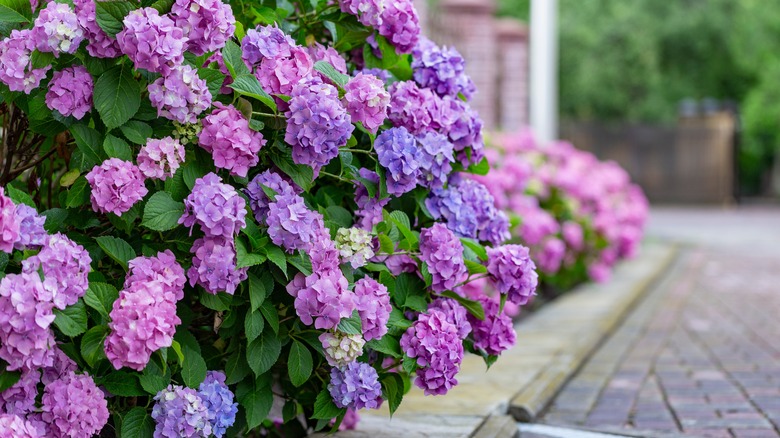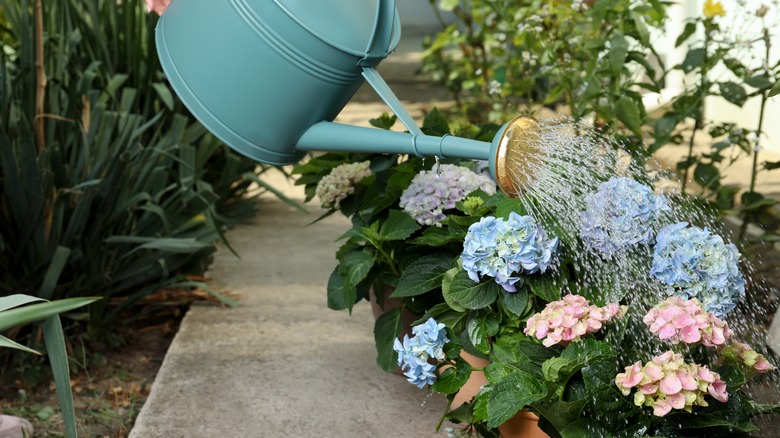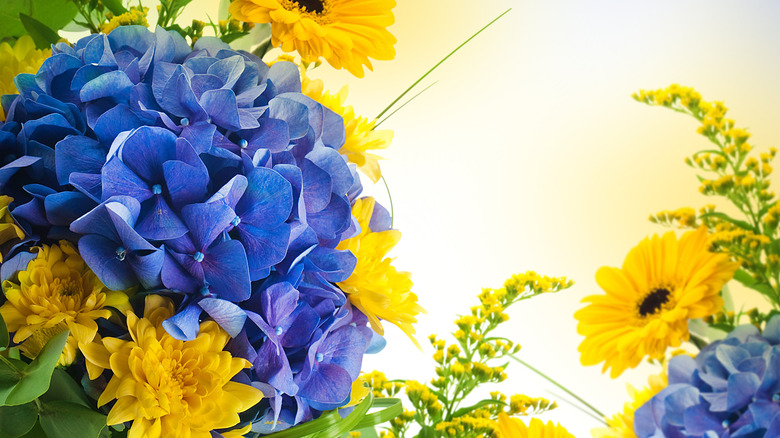Why Your Hydrangea's Flowers Are Smaller Than Normal And How To Fix The Problem
Hydrangea plants are some of the most sought-after fall plants due to their colorful flowers, variety, and fragrance. Though they are typically easy to care for and grow, sometimes you may find that the flowers are on the small side. There are several reasons your flowers may not be growing to their full potential, but it's an easy enough gardening problem to fix.
These colorful perennials, which can be found in a wide variety of colors such as pink, white, lavender, rose, and even blue, require pretty basic plant care. These beautiful plants should ideally be planted in the fall but can also be planted in the spring. This is because they need warm and moist soil to become fully rooted and thrive before the weather turns frosty or extremely hot. Of course, this depends on where you live.
To put it simply, hydrangea plants need sun, water, and fertilizer. However, it is the amount of each of these that may cause flowers to remain on the small side.
Your hydrangea may not be getting enough water
One of the biggest reasons for producing small flowers is that your hydrangea is just not getting enough water. Hydrangea plants require a good amount of water and they require it regularly.
Aim for a healthy watering session at least once or twice a week. These plants need deep watering, and a simple sprinkle just will not do. A sufficient amount of water needs to reach deep into the roots in order for the hydrangea to thrive. Keep in mind that you shouldn't drown the plants with water. When you're finished watering, the soil should be thoroughly wet but not overflowing with water.
Check soil at least four inches deep by sticking your fingers into the soil. If the soil is dry, it is a sign that the hydrangea needs more water. A plentiful amount of water will help flowers bloom to their full capacity. It also helps to keep your weather conditions in mind — if it's been very hot you may need to water more often and if there has been rain, you may need to water slightly less. Again, checking the moisture in the soil with your finger is a good rule of thumb.
Sunlight and fertilizer are also important
Sunlight is vital to hydrangea plants. The goal is to have morning sunlight followed by afternoon shade. Most types will require soaking up the sun for 3-6 hours a day.
However, there is one type of hydrangea that will need more than that. The hydrangea paniculata, or the panicle hydrangea, which includes fire light, limelight, pinky winky, strawberry sundae, and vanilla strawberry can be in the sun all day.
Finally, though most hydrangea plants do very well in rich soil, sometimes the soil isn't up to par. In that case, fertilizers with added phosphorous will be necessary. However, if too much fertilizer is used, especially in already rich soil, flowers won't bloom to full capacity and you may notice more leafy growth instead. The best way to determine whether your hydrangea plants are getting too much fertilizer is to do a pH soil test. You can also scale back on fertilizer and see if the flowers grow better without it.


